Dear Music Teachers and Piano Teachers,
during the pandemic years 2020–2022 music schools have been mainly closed, and lessons often have taken place via video portals. Many music students (and their parents) depended heavily on teaching materials and tips on how to play music at home and/or teach themselves in this tense situation, while still having fun.
Still today, these tips, solely aimed at piano teachers and their students, offer valuable support with good tips, specific suggestions and – not least – the sheet music material you need.
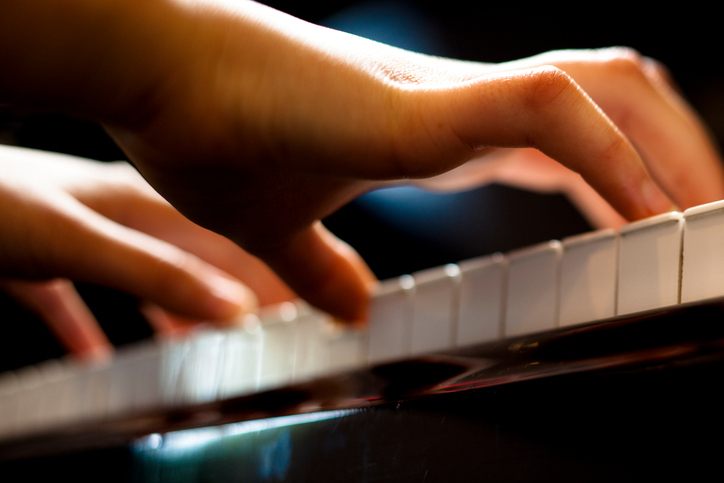
Apart from the episodes you can find below, we have also compiled tips for your piano teaching for three of Haydn’s Piano Sonatas on the occasion of the new edition of Haydn's 55 Piano Sonatas published in 2020
Part 1: Erik Satie, Gnossienne No. 1
Melancholic musical magic
PDF to download
This enchantingly sorrowful piano piece, without bar divisions, is easy to learn (level 2 of 9). Perhaps start initially with only a few lines. Your student just needs a few initial tips from you, as the teacher, and he is ready to start playing. For example:
- Play very, very slowly
- First learn the left hand (chord with 4/2/1 or 5/3/1 fingering) in a sarabande rhythm
- First pencil-in the right hand fingerings before you start playing
- Practice the many rapid grace notes individually
- "Experiment" with both pedals (tone)
You can also prompt your students to research the etymology of Satie's strange French titles, in particular his inspiration for the title "Gnossiennes": What could they possibly be? Whoever comes to love this monotonic piece—and who could escape its melancholy (especially in these "corona days")?—will then want to learn to play it in full. Perhaps one of the many recordings will help your students to make a start. For instance, try: https://www.youtube.com/watch?v=xwgvEOY0vaA.
All six Gnossiennes can be found in the following Urtext edition:
HN 1073 Erik Satie: Gnossiennes
Part 2: Edvard Grieg "Bell Ringing" Op. 54, No. 6.
Fifths left/right
PDF to download
In the tone-sensitive and technically easy "Bell Ringing" by Grieg, the following is practiced (please also use the piano study notes in the PDF):
- Fifth spans for left and right hands in various constellations
- Brief suggestions
- Crossing hands
This magical piece in fifths can be found in the following Urtext editions:
HN 1823 At the Piano. GRIEG – 15 Well-Known Original Pieces
HN 681 Grieg Lyrical Pieces, Book V, Op. 54
Part 3: Johannes Brahms | No. 7a/b from the 51 Exercises for Piano
Chromatic scales
PDF to download
This exercise is also suitable for the somewhat advanced beginner. It's enormous fun, particularly for those "keyboard athletes" among us. First, only practice with one hand: 7a right, 7b left. As soon as your students have understood the easily comprehensible sequence (ascending minor third with 1-5 or 5-1 at the beginning of each phrase) they should play it from memory. The light, but always pronounced slur, is best played forte. Very slow tempo at first, then faster later.
Numbers 7a and 7b are by far the easiest of the 51 piano exercises by Brahms that are so highly acclaimed by all of the great pianists and piano teachers. Incidentally, Brahms—with his inimitable dry sense of humour—suggested, "All kinds of instruments of torture, from the thumb screw to the iron maiden" for the title page of the first edition. Wouldn't it be refreshing if you—as teachers—were perhaps occasionally to refrain from inflicting such "torture"?
This exercise can be found in the following Urtext edition:
HN 27 Brahms, 51 Exercises for Piano
Numbers 7a/b can be purchased separately in the Henle Library App – as can all of the other 50 exercises. The complete Number 7 costs 3 credits or approx. €0.30.
Part 4: Daniel Gottlob Türk | "Ich bin so matt und krank – "
Stretches the right hand | Black/white keys | Independence of the right & left hand
PDF to download
Some of you will remember the following selection books from your own lessons and are possibly still using them in your teaching today:
HN 134 Easy Piano Pieces, Classical and Romantic, Volume 1
HN 135 Easy Piano Pieces, Classical and Romantic, Volume 2
HN 167 Easy Piano Music – 18th and 19th Centuries, Volume 1
HN 168 Easy Piano Music – 18th and 19th Centuries, Volume 2
HN 339 Sonatinas for Piano, Volume 1, Baroque and Pre-Classical
HN 340 Sonatinas for Piano, Volume 2, Classical
In the first-mentioned volume, HN 134, you will probably find one of our easiest piano pieces of the whole Urtext catalogue. This short piece comprises just eight measures full of silent pain; perhaps very fitting during this time of coronavirus disruption. Daniel Gottlob Türk from Leipzig was a contemporary of Mozart, and his countless pedagogic piano creations "…owe more to the calculating theorist than to the highly imaginative composer [which is why they] were very quickly relegated to the realms of oblivion" (Robert Eitner, lexicon). In our opinion this shouldn't be the case at all: let your students play his music too!
Part 5: Béla Bartók | "Spiegelbild", No. 12 from: Mikrokosmos Volume 1
Pentatonic space | Left and right hand in strictly symmetrical opposing motion | Soft dissonances
PDF to download
The first volume of Béla Bartók's Mikrokosmos offers a virtually endless treasure trove of easy pieces. Only a few months ago did we, in cooperation with the Bartók Archive in Budapest, publish all six volumes of Mikrokosmos in three Urtext editions.
Perhaps you would like to add your own practice tips for your piano students? Provided you start with the correct finger on the correct key, there's actually not much that can go wrong! Children are frequently nowhere near as surprised as one would think by the harsh dissonance of the introduction. Because the pentatonic space required for this mirror image piece is easy for students to master if they play the stave above it. You may also wonder "how did this piece get its title?"
For your students, acquiring one—or even all—of the highly comprehensive Mikrokosmos volumes probably only makes sense in individual cases. In this instance we recommend the digital version of our Henle Library App: This allows you to purchase each individual short piece from Bartók's Mikrokosmos in digital form for just a few cent. For instance, "Mirror Image" No. 12 is available for 3 credits (approx. 0.30 euro). The wonderfully printed Mikrokosmos Urtext editions by this Hungarian grand master of piano teaching are available in the following three anthologies:
HN 1408 Bartók, Mikrokosmos, Volumes I-II
HN 1409 Bartók, Mikrokosmos, Volumes III-IV
HN 1410 Bartók, Mikrokosmos, Volumes V-VI
Classic form of minuet with trio | Melody line in triplets and eighths | Character changes from C major to C minor
PDF to download
"All of the major composers have built on Haydn's ideas – and he was without doubt the most original of them all", notes the conductor Nikolaus Harnoncourt. Haydn's early sonata, which was probably composed in the 1750s—and therefore during the transition from the Baroque to the Classical period—makes it easy to take the first steps playing Classical sonatas. In this lively and merry minuet the right hand should play the broken triads and scale runs with a light and elegant touch. The left hand should strike the dyads gently, but precisely, together. The repeating sections should be varied dynamically. In contrast to this, the trio abruptly changes into a dark, serious mood – dynamically however, this should be played more in the p range.
This cheerful-melancholic sounding music is contained in the following printed Urtext editions published by us:
HN 1504 Haydn Little Early Sonatas
HN 1336 Haydn Complete Piano Sonatas Volume 1
Part 7: Frédéric Chopin | Waltzes in A Minor, KK IVb No.11
Broadly-sweeping cantabile melodic lines in the right hand | Embellishments to be integrated into the melody progression | Soft chord accompaniment in the left hand | Easy exercise in pedal use
PDF to download
This easy waltz, possibly composed for teaching purposes, follows an ABACA structure. The left-hand root notes and chords should be practiced until they can be played accurately. For this we recommend that you memorize the notes of the first few bars, which should be continuously struck with the 5th finger, until you can play them with your eyes closed. Then the root, together with the respective chord, should be correspondingly practiced together. The harmonic analysis is helpful when memorizing.
This graceful waltz is contained in the following printed Urtext editions published by us:
HN 1822 At the Piano – Chopin: 17 Well-Known Original Pieces
HN 131 Chopin Waltzes
Part 8-10: Joseph Haydn | Piano Sonatas
Part 11: Johannes Brahms, Waltz op. 39 no. 1
-> Staccato
You can download a PDF version of the work free-of-charge here, either in the original version or in a simplified version by the composer.
Pdf for download (original version)
Pdf for download (simplified version by the composer)
In the first eight measures of the Tempo giusto waltz published in 1867 there is a staccato dot at every note. What did Brahms have in mind? Did he want all the eighth and quarter notes to be played in a short and detached manner? Is the performer allowed to use the pedal?
If we approach this from a musical perspective, it would be wrong to only play the notes in a short, dry manner. Instead, the staccato should be seen as an indication that the opening of the waltz should be played lightly and with verve. This also means that the pedal should be used carefully to support the rounded sound that is needed, in particular through the resonant harmonics. Thus, the energetic opening should be seen as a contrast to the middle part of the piece that is marked piano-legato after the forte-staccato opening.
This waltz can be found in
HN 1286 Brahms – Waltzes op. 39 (16 Waltzes), and in
HN 1287 Brahms – Waltzes op. 39, in a simplified version of the original arranged by Brahms himself and which is especially suited for teaching purposes.
You can either order these editions from your music dealer or in our online shop. If you use a tablet, you can also find this waltz and all the other ones in this collection in our Henle Library app.
Part 12: Johannes Brahms, Rhapsody in b minor, op. 79 no. 2
-> Tempo
One of the greatest challenges with this rhapsody is choosing the ‘right’ tempo. If it is played too fast, it will be less effective. On the other hand, if it is played too slowly, it will be too drawn out. And if the tempi are too flexible, the Rhapsody will soon lose its overall coherence. But there are solutions! Particular attention should be paid to the eighth-note triplets. They leave their mark on the work and are present in almost every measure. Whether as a driving force in the main motif (M. 1-4),
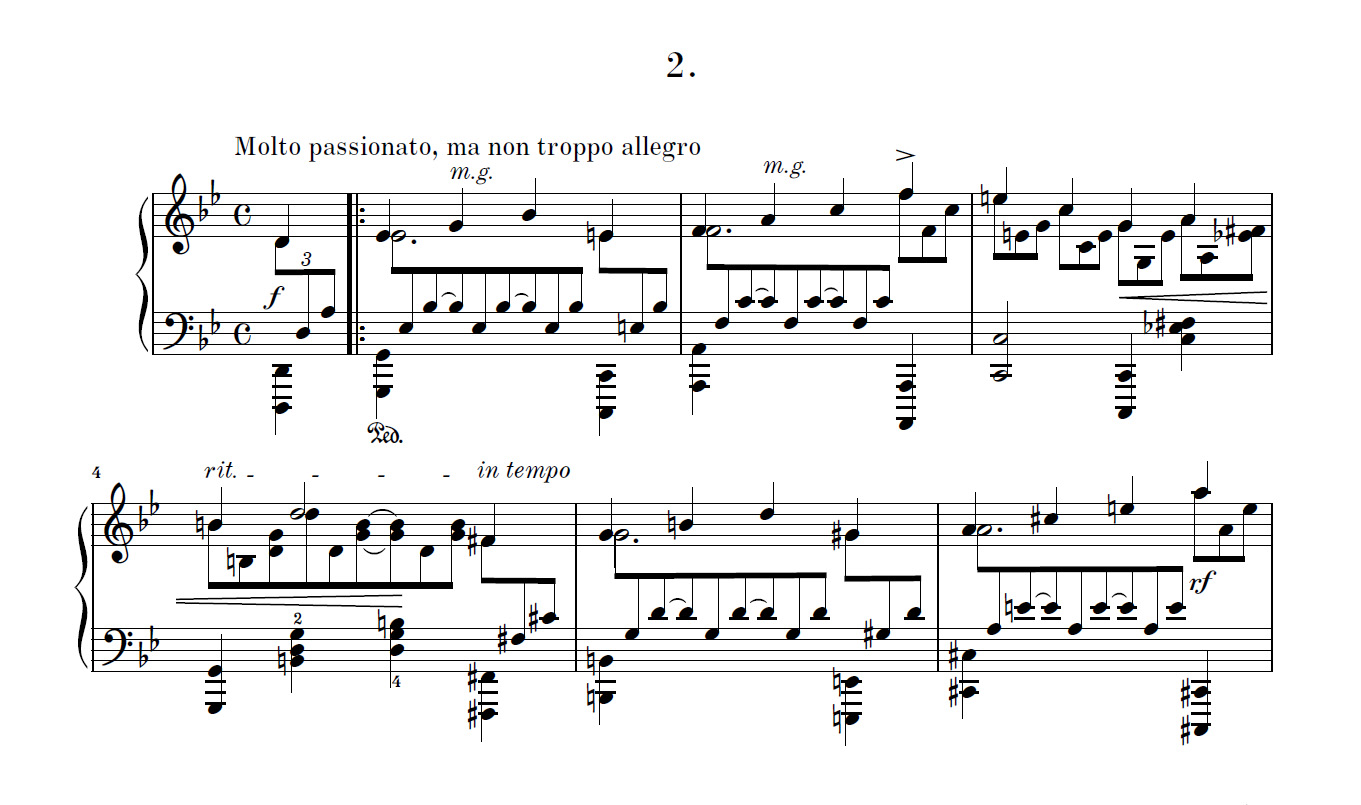
an undulating legato movement in the lyrical theme that comes after this (M. 14 ff.)

or a pacing ostinato in the secondary theme (M. 21 ff.),
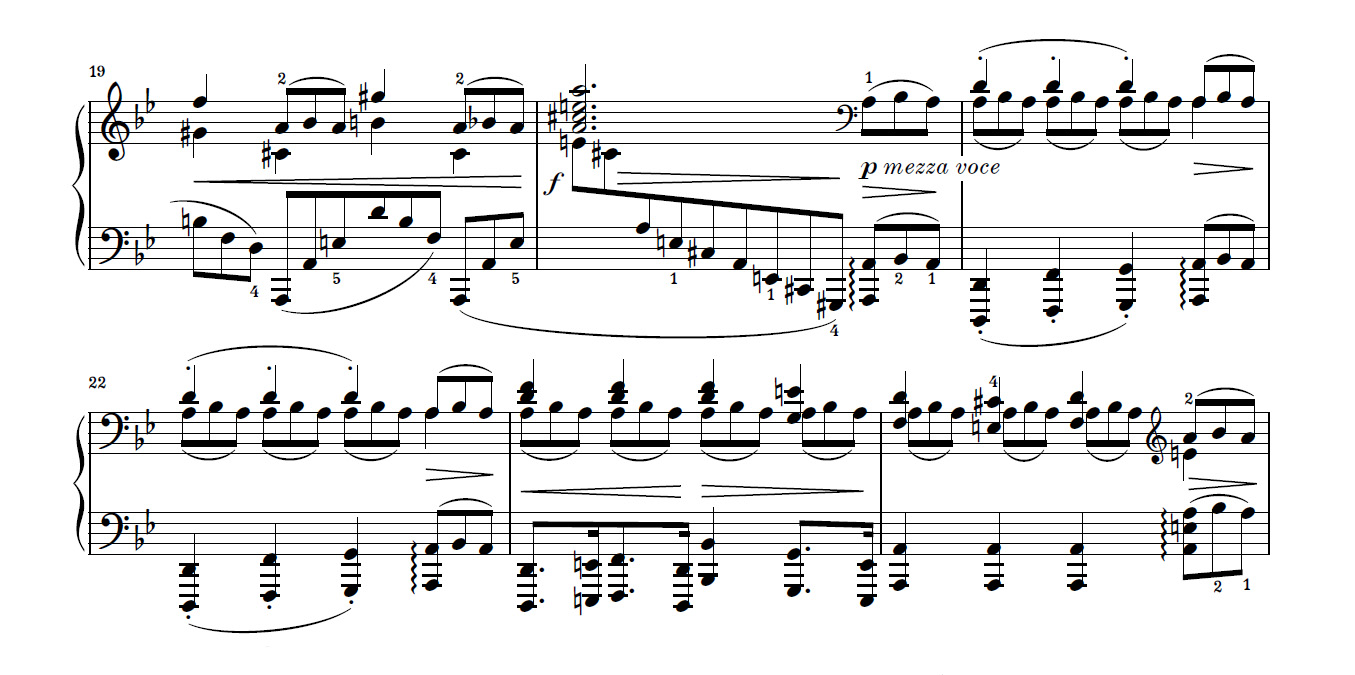
they always prove to be character-forming. For this reason, the best effect is created when all the eighth notes are played without haste, and when the mezza voce passages in particular (M. 53 ff., M. 106 ff.)
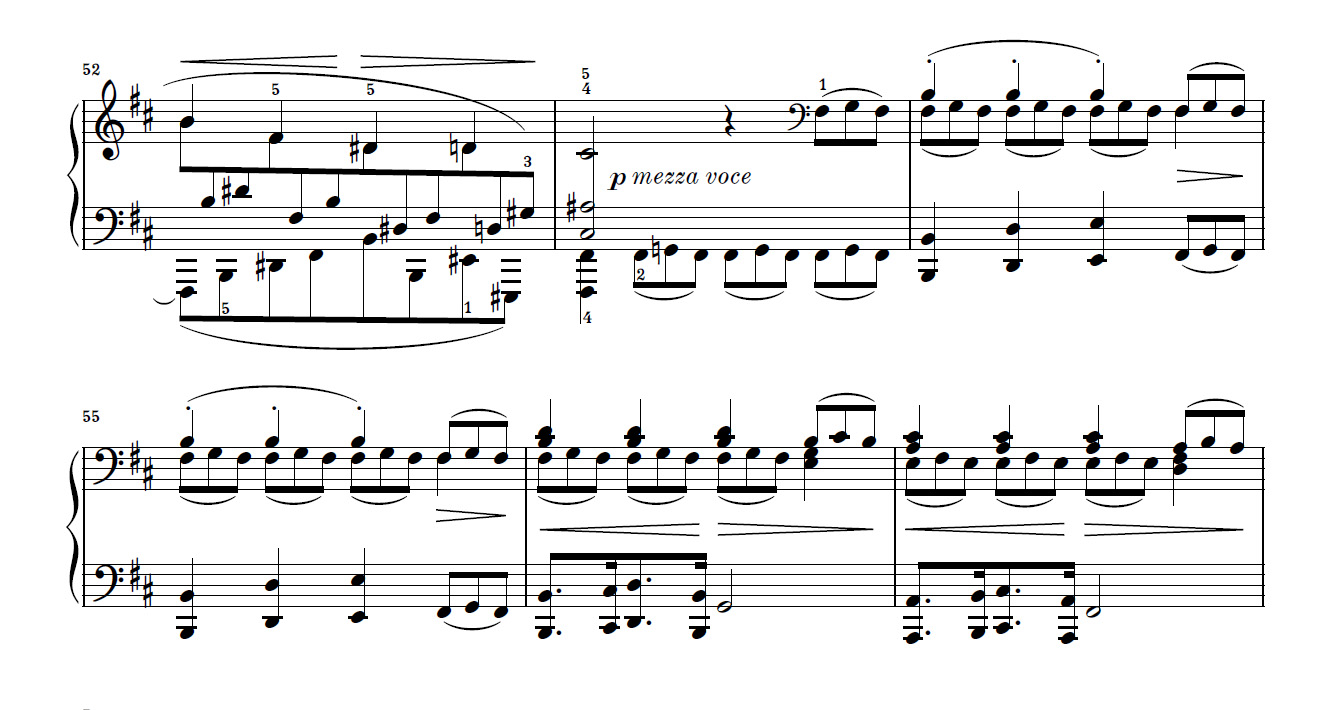
are played with even dynamics and rhythm, thus lending them a mysterious and hypnotic quality. The musical flux of these triplets connects the contrasting passages of the work into one larger form, so the performer does not have to resort to changes of tempo.
This rhapsody can be found in
HN 1251 Brahms – Two Rhapsodies op. 79,
which you can either order from your music dealer or in our online shop. If you use a tablet, you can also find this particular rhapsody in our Henle Library app.
Part 13: Johannes Brahms, Rhapsody in b minor, op. 79 no. 1
-> dynamics
At the beginning of this heated rhapsody, composed in 1879, Brahms calls for an increase in the dynamics after the forte opening by inserting two crescendi, even though they only end in another forte in measure 11.
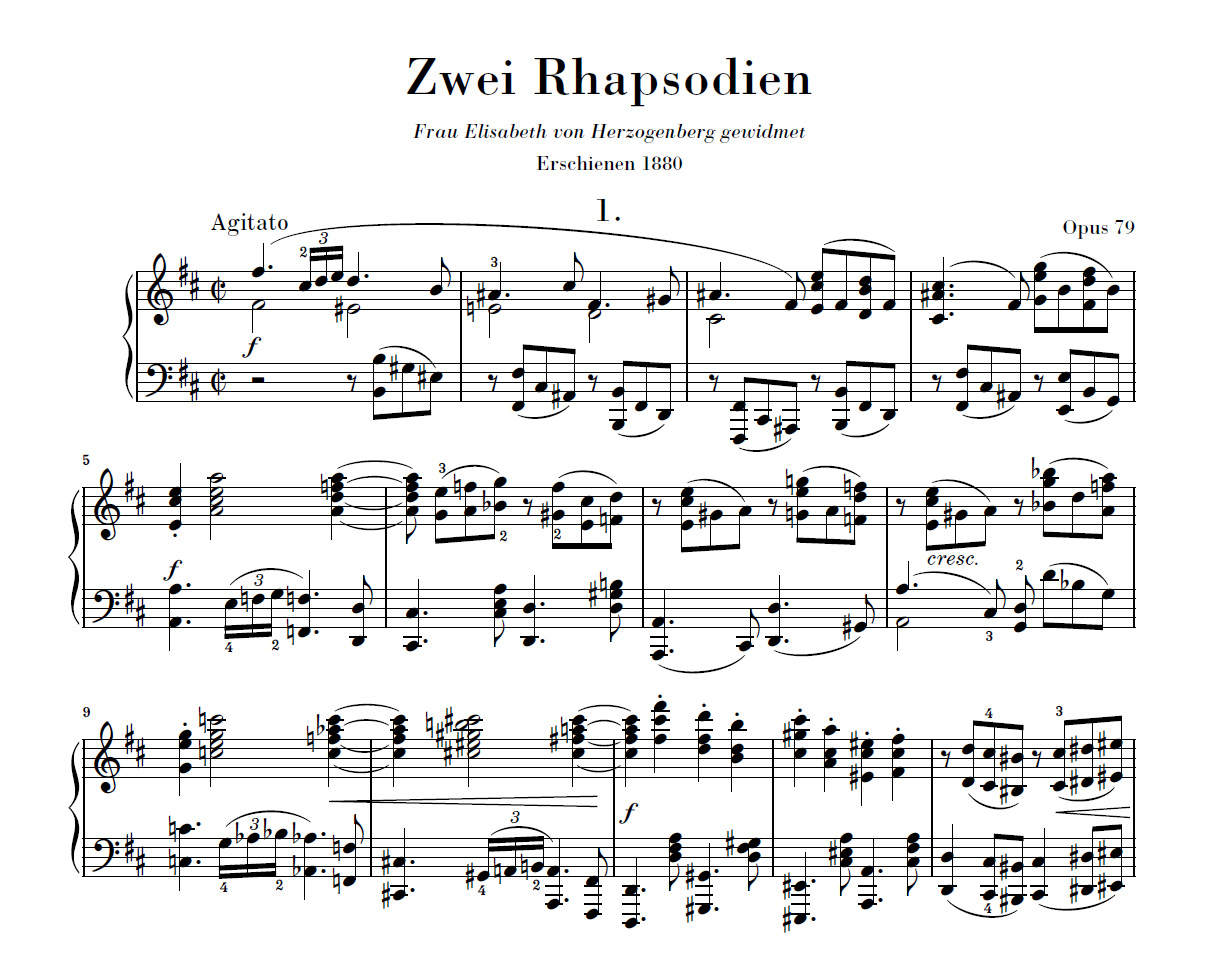
So, what does Brahms actually mean? The key to this can be found in the nuanced dynamics in the passage. Following the forte opening the sixteenth-note triplets should be scaled back a little. The melody could then be continued in mezzoforte agitato, while the middle part with its half notes takes on a subordinate role with its individual legato line. The figures in the left hand are more expressive if each group of eighth notes is played with a decrescendo, the same applies to the right hand in measures 3 and 4. The forte in the following measure indicates that the left hand now takes over the lead and continues in a similar manner with a carefully balanced tone in the right hand. If the dynamics are graded in this way the musical texture remains transparent and allows the performer to increase the sound to the forte in measure 11.
In measure 81 onwards as well as the parallel passage from measure 209, there is a leading middle part im più forte, whose execution requires a large hand span.
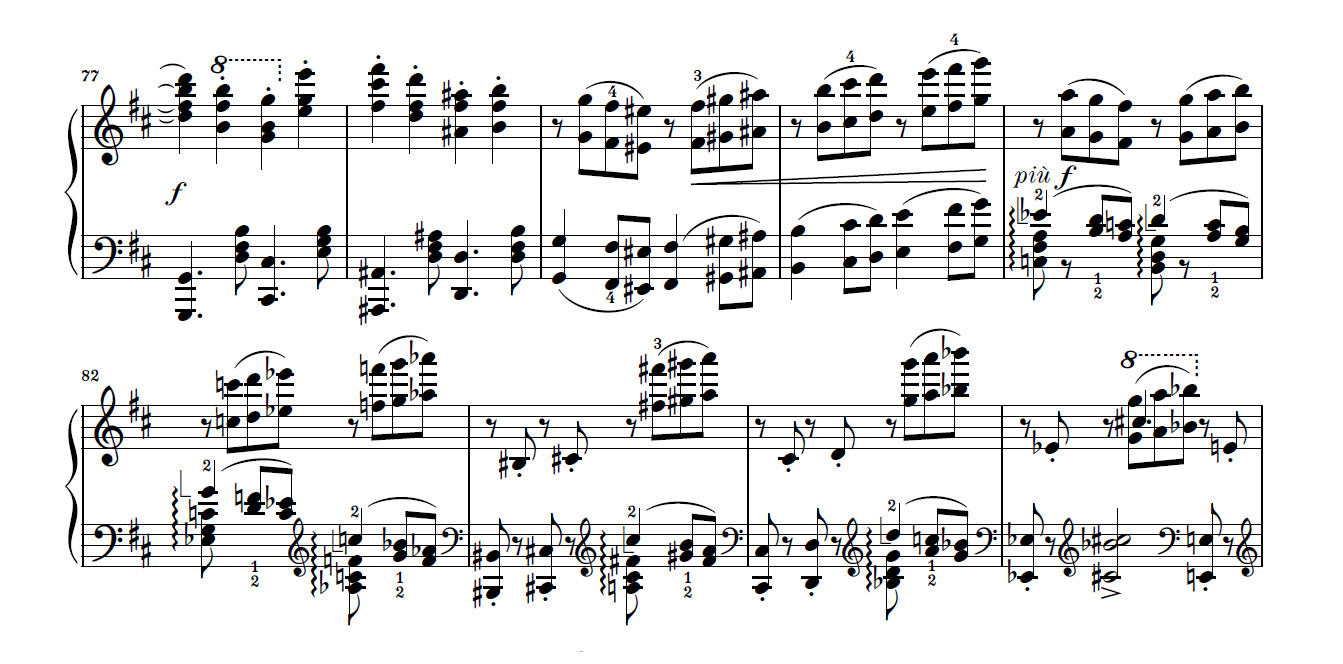
So, what can a pianist do who does not have the span to be able to play the top notes of the arpeggiated chords as strong notes in the melody? In this case, the right hand can be brought in to play the top notes of the chord, as demonstrated by the fingering. Spreading the notes across the hands like this serves the musical expression and might even make it playable for some pianists, even if the right hand needs to practise the leaps.
The rhapsody can be found in
HN 1251 Brahms – Two Rhapsodies op. 79
which you can either order from your music dealer or in our online shop. If you use a tablet, you can also find this particular rhapsody in our Henle Library app.
Part 14: Schönberg | Six Little Piano Pieces op. 19, no. II.
Number II is all about the rhythmic element coupled with the lyrical component. In measures 1-3 there is an ostinato in the left hand. This can easily be turned into an improvisation, also for four hands, so one person plays the ostinato and the other improvises on top.
In order to make the piece swing despite the conscious metric concealment, the first beat in each measure could be made to sound with a syllable – almost Dadaistically.
And a fingering idea: in measure 6 the thirds could be spread over both hands and the final chord in the piece could be played by the left hand so that the upper part can be played using the strong thumb.
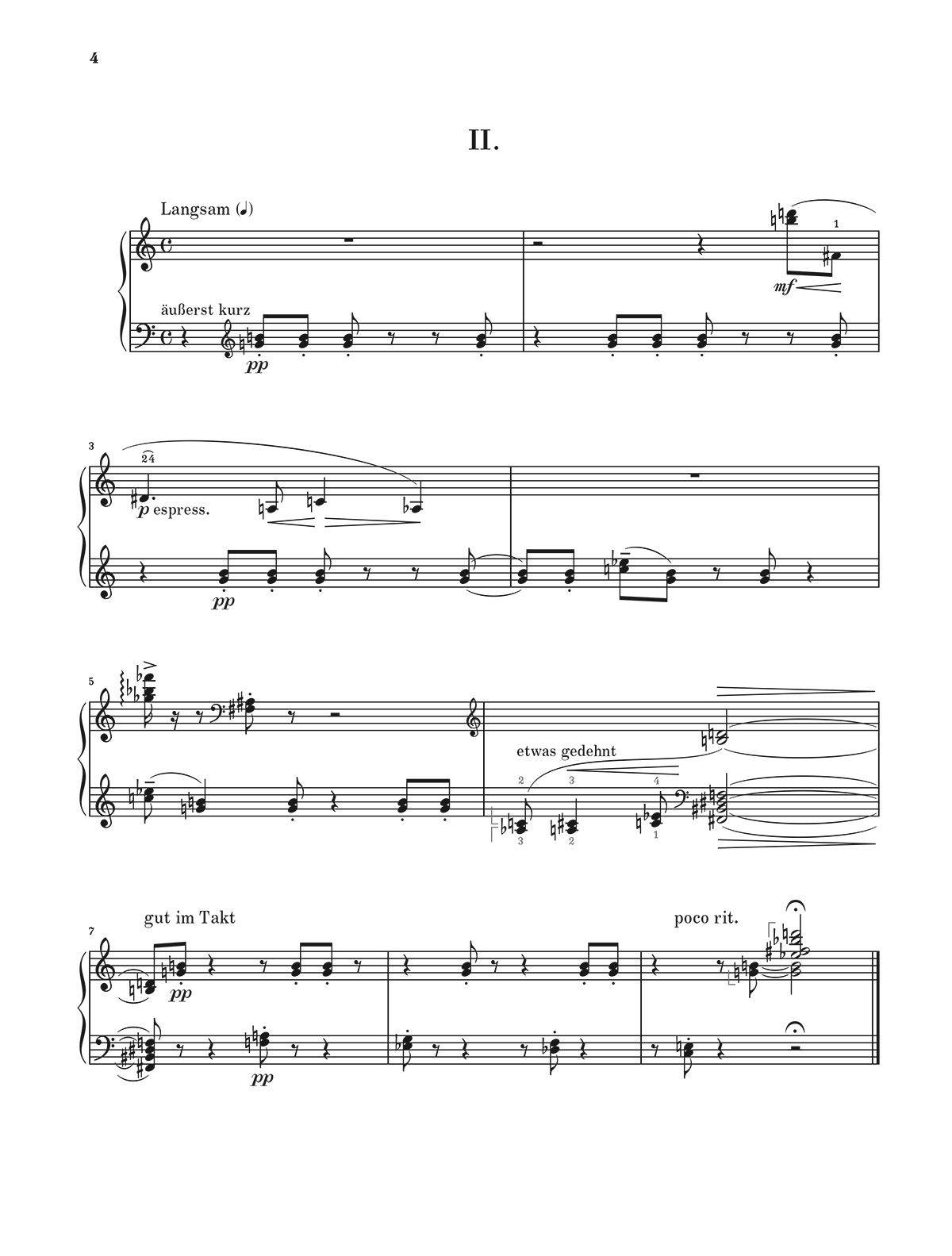
The piece can be found in
HN 1547 Schönberg – Six Little Piano Pieces op. 19
which you can either order from your music dealer or in our online shop.
Part 15: Schönberg | Six Little Piano Pieces op. 19, no. VI.
Schönberg composed the sixth and last piece in the piano cycle op. 19 a month after the death of Gustav Mahler, whom he greatly revered and to whom he had also dedicated his Theory of Harmony, published that same year. Just as Schönberg had arranged many works for other scorings, this piece would also have lent itself to the scoring of Mahler’s famous Adagietto from the 5th symphony, namely for harp and string orchestra.
In measure 5 Schönberg only stipulates the right pedal, but measures 2-4 and the ending are really calling for a way of sustaining the chord longer. Measures 2-4 and also the ending are very well suited to discovering the middle, sostenuto, pedal.
And another fingering suggestion: small hands can play the lowest note of the first chord with the left hand each time.
Schönberg devoted a great deal of time to setting text to music and also sometimes set his own to music. Literature might also be a good starting point for students to get to know Schönberg’s works. What about getting them to write their own elevenie that captures the sound of the piece in words? (https://en.wikipedia.org/wiki/Elevenie)
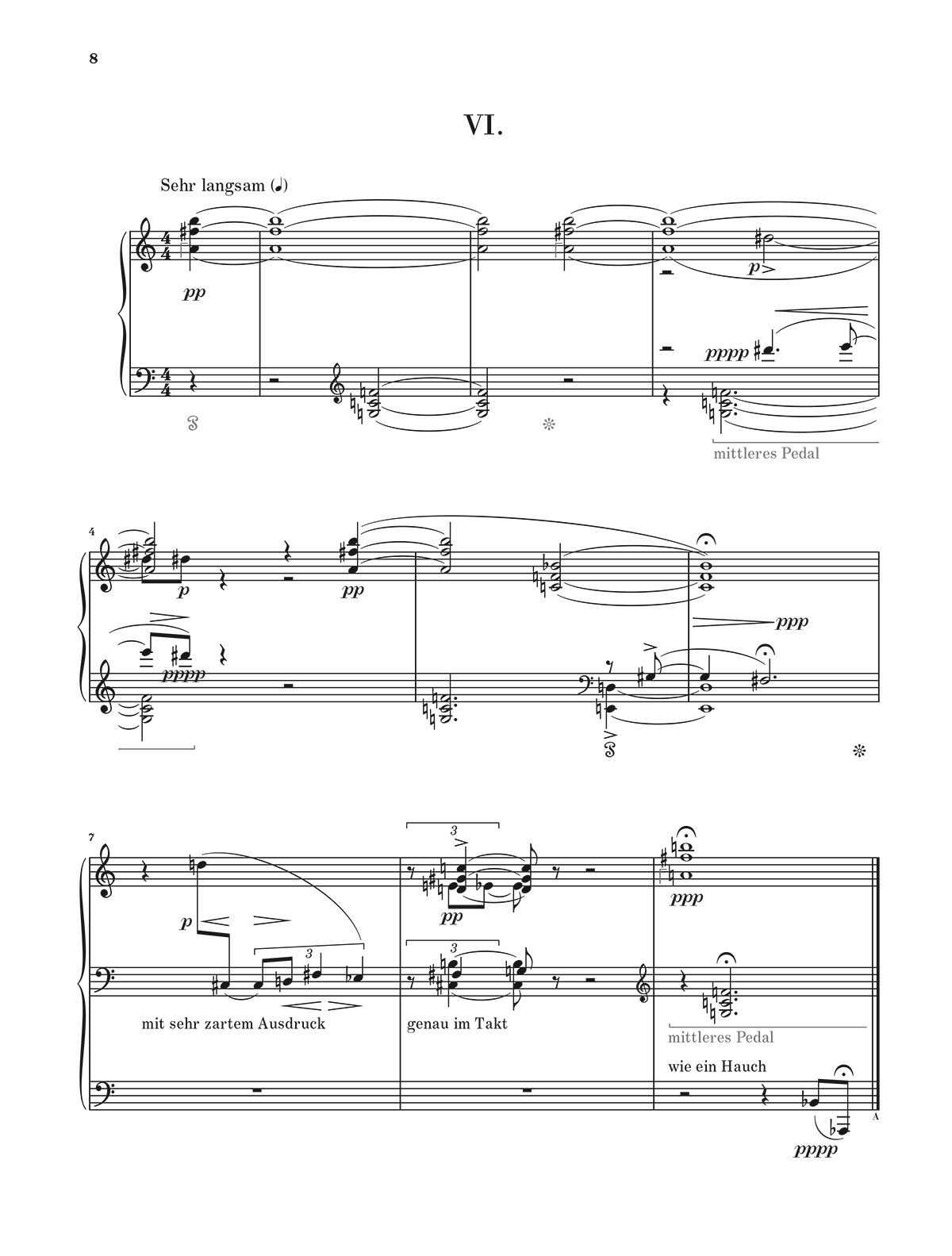
The piece can be found in
HN 1547 Schönberg – Six Little Piano Pieces op. 19
which you can either order from your music dealer or in our online shop.

